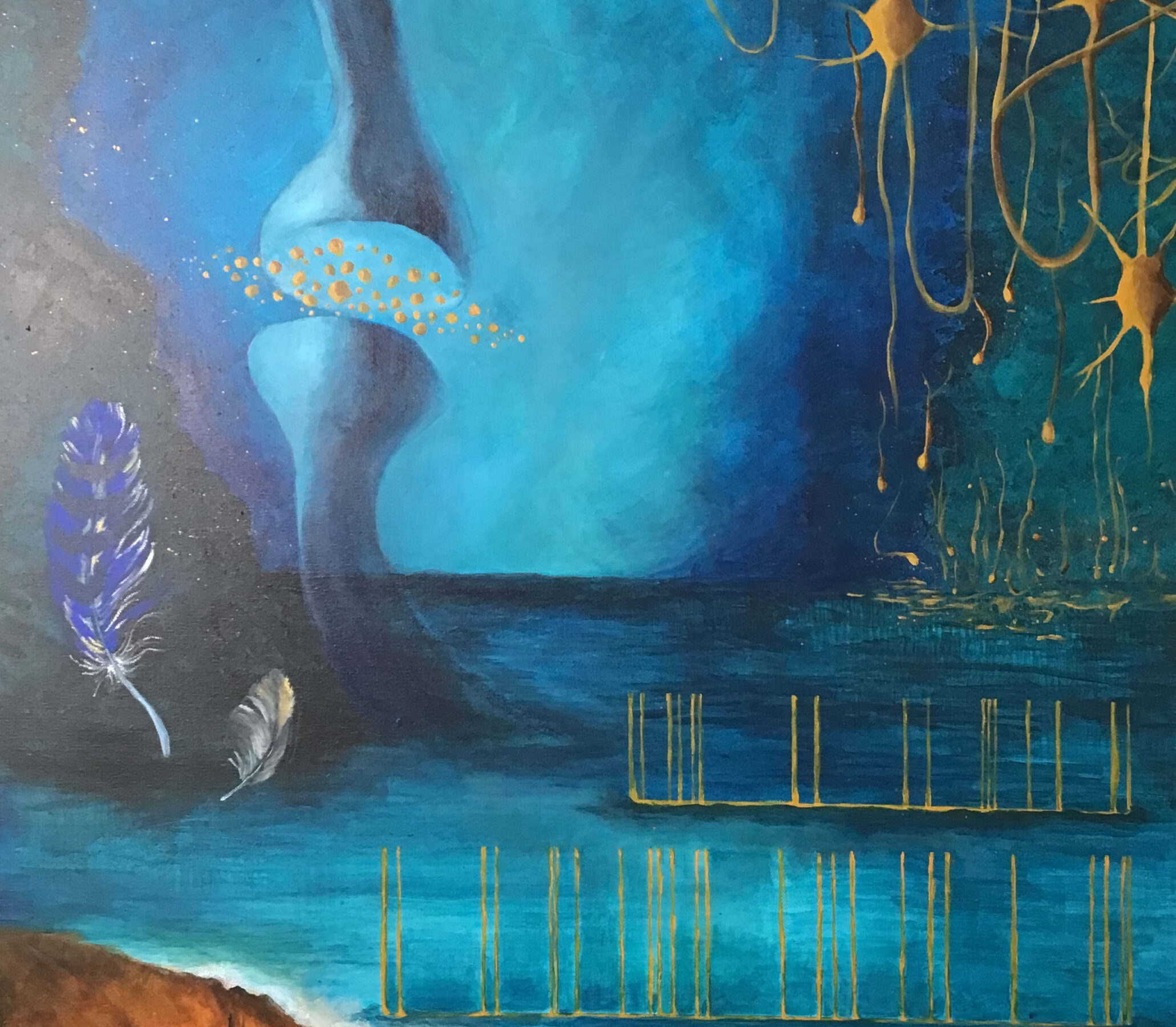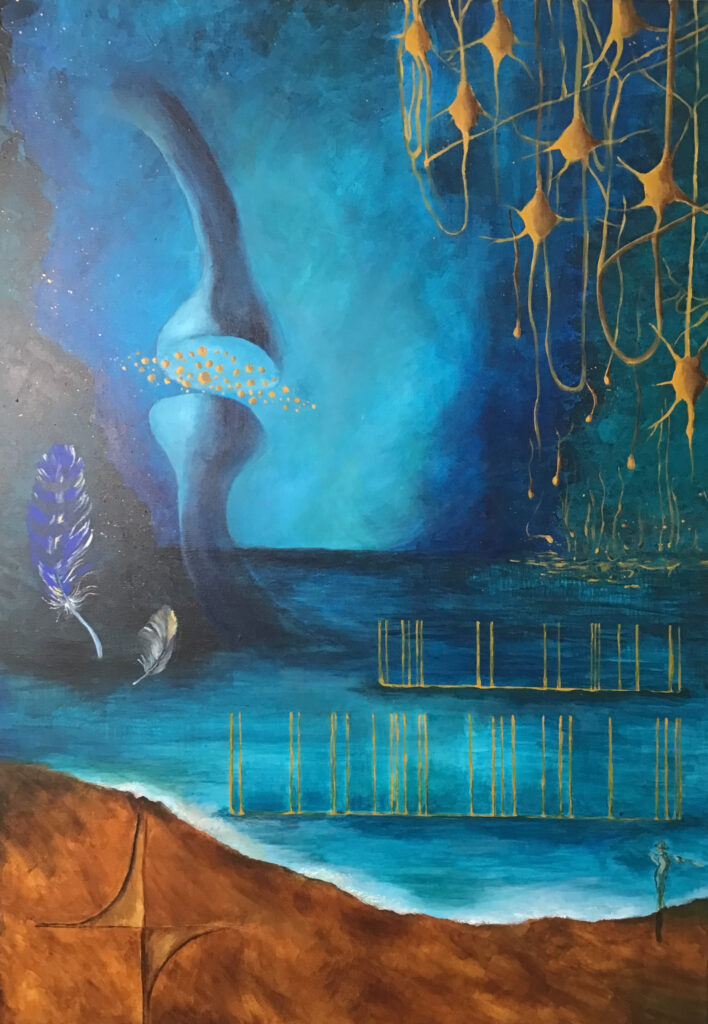Neural Nocturne
I was commissioned to make a painting to commemorate the work of a neuroscientist, Wulfram Gerstner, who is also a classical violinist. Immediately creating a ‘Nocturne’ is what came to my mind. Not only for the apparent nod to the music but also because night symbolizes the unknown, and scientific research brings moments of illumination in this darkness. In creating this imagery, I was inspired by two other artworks:
- Nocturne in Black and Gold-the Falling Rocket, Painting by James Abbott Whistler.
- Violin and piano arrangement of Chopin’s Nocturne in C sharp, as performed by Gemma Kim.
Neuroscience motifs are scattered around the canvas. I placed the synapse, like the Loch Ness Monster emerging from the sea, almost in the center to symbolize the connections made, conceptual or human. Science can often be a solitary endeavor (see the tiny figure in the bottom right corner) but is also largely collaborative. I want to communicate this through this composition visually. The spikes on the sea correspond to the number of PhD students supervised by Wulfram (incidentally 42). The work of Cajal inspires the pyramidal neurons, which look star or firework-like and work well within the composition. A Spike timing-dependent plasticity (STDP) kernel is placed on the sands at the beach. Floating above it are also two barn owl feathers symbolizing how this abstract thought and theory manifest in the biological world.
There isn’t an explanation for everything because not all parts of the painting process emerge from conscious thought.

